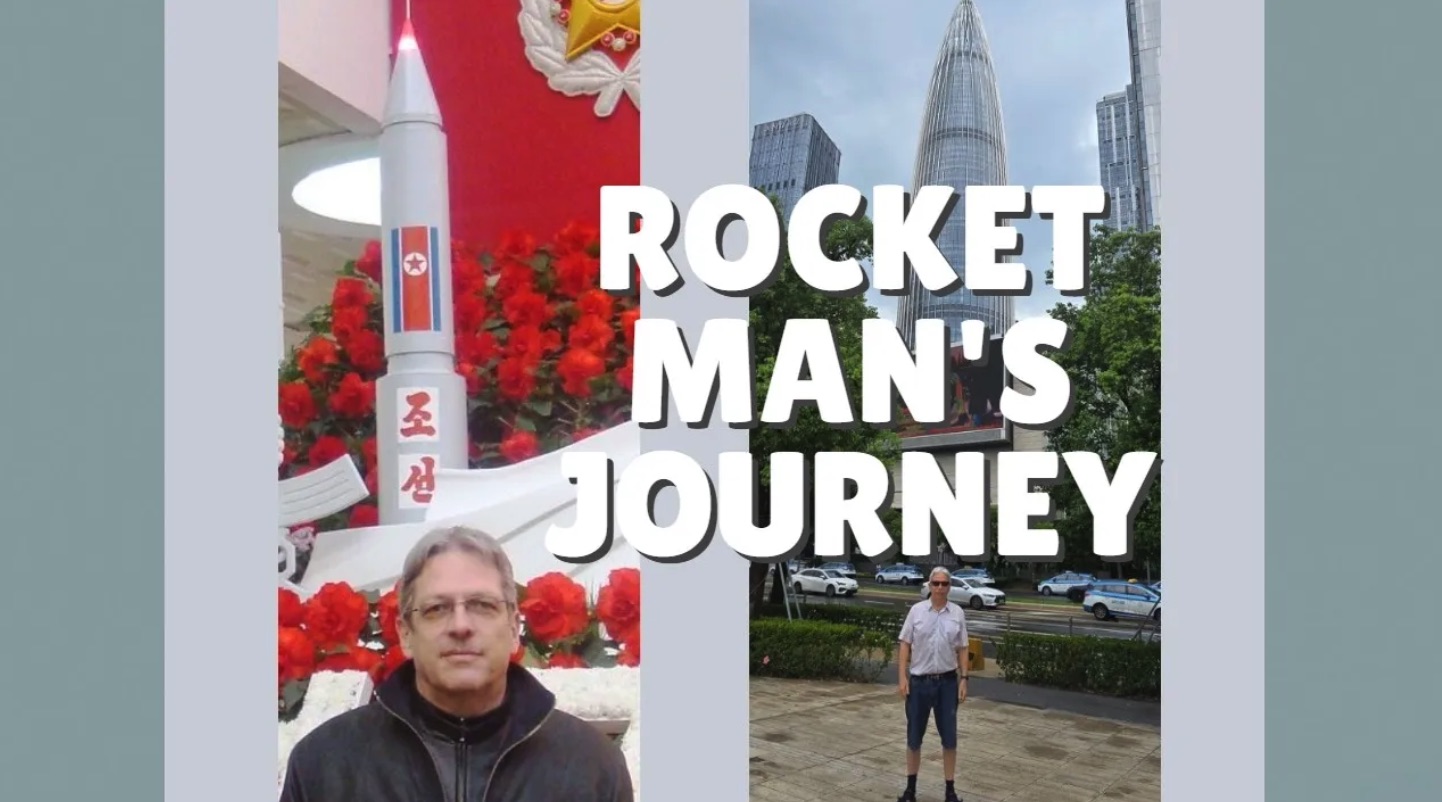North Korea built bombs to survive. China built brands to thrive. The U.S. shaped them both—just in opposite ways.

Decades ago, I posed in Pyongyang, North Korea, in front of a mock rocket, a symbol of the country’s pride. That image earned me a nickname among some: “Rocket Man.”
At that time, North Korea was the focus of global attention—not as a travel destination, but as an emerging nuclear power. Its long-range missiles could now reach targets beyond the Pacific, while the unresolved conflict with the US dated back to the 1950s. (To this day, Washington refuses to sign a peace treaty.) Founder Kim Il Sung had once proposed a remarkable policy of détente—even the establishment of a US embassy in Pyongyang—but these offers went unanswered. Instead, US forces regularly conducted invasion maneuvers with South Korea and prepared for a conflict that many feared could set the peninsula ablaze again at any moment.

North Korea’s militarized identity has shaped its global posture for decades. (Illustration Felix Abt)
North Korea chose its path. It built a powerful nuclear deterrent. It watched Iraq and Libya—two nations that had disarmed—be invaded and dismantled. Pyongyang decided it would not meet the same fate. The cost? Nearly total economic isolation. Yet, survival mattered more than prosperity.

Present-day Rocket Man — this time in Shenzhen, China, in front of a symbol of economic lift-off. This gleaming skyscraper rises opposite a sprawling green oasis, where parks meet waterfront vistas along the city’s edge.
Fast forward to today. I find myself again in front of a rocket-shaped structure—this time in the ultramodern city of Shenzhen, China. The rocket here is not a missile. It’s a skyscraper. A symbol not of war, but of economic lift-off.

Not long ago, Shenzhen was just a small fishing village without a single skyscraper—a stark contrast to the metropolis it is today. (Image: Shenzhen Museum)

Modern Shenzhen — one of China’s most advanced and fast-growing cities (Photo Felix Abt)
Shenzhen, once a humble fishing village, is now a global innovation hub. It rose to prominence as China opened up its markets, and American corporations flocked in to take advantage of cheap labor and a massive, fast-growing consumer base. While North Korea, which had been subjected to bone crushing sanctions by hostile foreign powers, had no choice but to retreat into isolation, China was integrating into the global economy—and skyrocketing forward.

Shenzhen is not just one of China’s leading tech hubs—it’s also a breeding ground for clever and catchy brands, like ‘Beautea’ and ‘Holiland,’ that are redefining restaurants and retail (Photo Felix Abt)
Of course, China’s size and resources gave it an advantage that North Korea never had. But their different paths of development illustrate two very different strategies: one is driven by fear — fear of becoming the target of the US, which relentlessly wages war, coups, and subversion against countries that do not submit to it — , the other by ambition. One missile is directed inward, hardened and isolated. The other points outward and is rising economically at record speed.

Two rockets. Two visions. One symbolizes survival; the other, success. (Photos Felix Abt)
From Pyongyang’s nuclear defiance to Shenzhen’s capitalist defiance—this is the story of two Rocket Men, and two visions of power in the 21st century.

